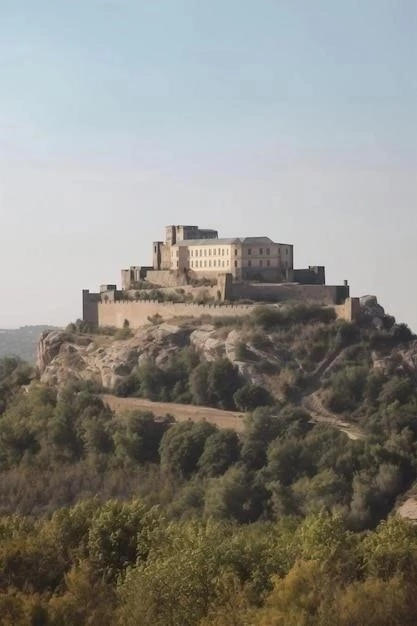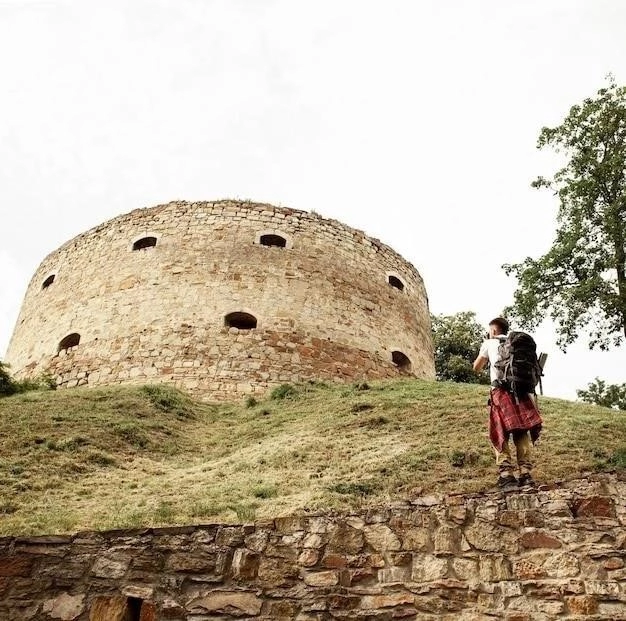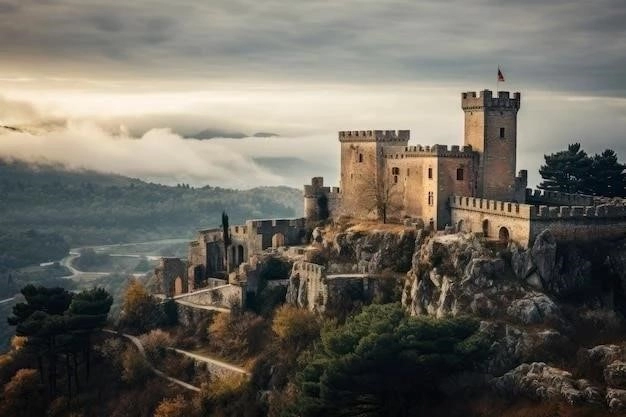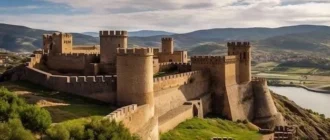The Mazagon Fort‚ a once-imposing edifice overlooking the bustling harbor of Bombay (present-day Mumbai)‚ stands as a testament to the ebb and flow of power during a tumultuous period in Indias history. While the fort itself is no more‚ its story offers a glimpse into the strategic importance of Mumbai and the relentless struggle for its control.
Construction and Early History
Erected around 1680‚ the Mazagon Forts origins are shrouded in some ambiguity. While some sources attribute its construction to the British‚ others point to Siddi General Yakut Khan as the builder. Regardless of its parentage‚ the forts location atop Bhandarwada Hill‚ a strategic vantage point overlooking the harbor‚ underscored its military significance.
A Time of Conflict: The Mughal-Siddi Siege
The late 17th century witnessed intense conflict in the region. The Mughal Empire‚ under Emperor Aurangzeb‚ sought to expand its dominion over the lucrative ports of western India. The Siddis‚ a powerful maritime force with their base in Janjira‚ often acted as Mughal allies. In 1689‚ Siddi General Yakut Khan launched a major offensive against British Bombay‚ capturing several key positions‚ including the Mazagon Fort.
The Razing of the Fort and Its Aftermath
The Mazagon Forts time as a bastion of defense was short-lived. In June 1690‚ following a payment by the British to Aurangzeb‚ Yakut Khan agreed to withdraw his forces from Bombay. However‚ in a final act of defiance‚ he ordered the destruction of the Mazagon Fort‚ leaving it in ruins. The site where the fort once stood remained relatively untouched for nearly two centuries.

Transformation of Bhandarwada Hill
The late 19th century witnessed a transformation of Bhandarwada Hill. The British‚ recognizing the need for a reliable water supply for the burgeoning city of Bombay‚ constructed a major reservoir on the site in 1884. This reservoir played a crucial role in meeting the water needs of South and Central Bombay.

The Mazagon Fort Today: A Lost Legacy
Today‚ no visible remnants of the Mazagon Fort remain. The Joseph Baptista Gardens‚ a tranquil public park‚ now occupy the hilltop where the fort once stood. However‚ the historical significance of the site is not forgotten. The gardens‚ named after a prominent Indian freedom fighter‚ serve as a reminder of the past and offer a place of respite amidst the bustling city.
Conclusion
The story of the Mazagon Fort‚ though brief‚ encapsulates a pivotal period in Mumbais history. It serves as a reminder of the strategic importance of the city‚ the fierce competition for its control‚ and the enduring legacy of conflict and transformation. While the physical structure of the fort may be gone‚ its story continues to resonate‚ reminding us of the layers of history that shape the landscape of the present.
Unearthing the Past: Archaeological Potential and Historical Significance
While the Mazagon Fort itself has vanished‚ the potential for archaeological investigation remains. Excavations on Bhandarwada Hill could unearth remnants of the forts foundations‚ defensive structures‚ or artifacts shedding light on the lives of its occupants. Such discoveries would be invaluable in reconstructing a more detailed picture of the forts short but significant existence.
Furthermore‚ studying the Mazagon Fort in the context of 17th-century India offers valuable insights. The forts construction and subsequent destruction highlight the complex power dynamics of the era. The struggle for control of Bombay‚ a strategically vital port city‚ involved not just the Mughals and the British but also powerful local actors like the Siddis. The Mazagon Fort thus becomes a lens through which to examine the broader historical forces shaping India during this period.

The Fort in Public Memory: Commemoration and Remembrance
Despite its physical absence‚ the Mazagon Fort continues to hold a place in the public memory of Mumbai. Local historians and heritage enthusiasts advocate for greater recognition of the forts historical significance. Proposals have been made to install plaques or memorials within Joseph Baptista Gardens‚ commemorating the fort and providing visitors with historical context.
Moreover‚ the integration of the Mazagon Forts story into local school curricula and museum exhibits could further raise awareness about this forgotten chapter in Mumbais past. By highlighting the forts history‚ we can foster a deeper understanding of the citys rich and complex heritage.
Conclusion: A Call to Action
The Mazagon Fort‚ though lost to time‚ presents a compelling case for historical investigation and commemoration. Archaeological exploration‚ coupled with archival research‚ can help us reconstruct its physical form and understand its role in the broader historical narrative. Furthermore‚ by integrating the forts story into public spaces and educational initiatives‚ we can ensure that this significant chapter in Mumbais past is not forgotten. The Mazagon Fort serves as a potent reminder that history is often hidden in plain sight‚ waiting to be unearthed and understood.
Preserving a Vanished Legacy: The Importance of Historical Reconstruction and Public Engagement
The absence of tangible remnants of the Mazagon Fort presents a unique challenge in preserving its historical significance. While the physical structure may be lost‚ its story can be kept alive through a multifaceted approach encompassing rigorous historical research‚ innovative archaeological investigation‚ and engaging public education initiatives.
Historical Reconstruction: Piecing Together the Past
A comprehensive understanding of the Mazagon Fort necessitates a meticulous examination of existing historical records. This includes consulting:
- British East India Company archives‚ which may contain detailed reports‚ correspondence‚ and maps relating to the forts construction‚ occupation‚ and eventual destruction.
- Mughal chronicles and records‚ which could offer insights into the Siddi-Mughal perspective on the conflict and the forts strategic significance.
- Travelogues and accounts of European visitors to Bombay during the 17th century‚ which might provide valuable descriptions or illustrations of the fort.
By carefully analyzing these disparate sources‚ historians can piece together a more comprehensive narrative of the forts history‚ its role in regional power struggles‚ and its eventual fate.
Archaeological Investigation: Uncovering Hidden Traces
Despite the passage of time and subsequent development‚ the potential for archaeological discoveries at the site of the former Mazagon Fort remains promising. A non-invasive geophysical survey of Joseph Baptista Gardens could reveal subsurface anomalies suggestive of buried foundations‚ walls‚ or other structural remnants. If warranted‚ limited and carefully targeted excavations could be undertaken to confirm the presence and nature of such features.
Furthermore‚ analyzing soil stratigraphy and searching for artifacts such as ceramics‚ coins‚ or weaponry could offer valuable insights into the daily life within the fort and the material culture of its inhabitants. Even small finds could contribute significantly to our understanding of this lost chapter in Mumbais history.
Public Engagement: Bringing History to Life
Preserving the memory of the Mazagon Fort extends beyond academic circles. Its crucial to engage the public and foster a sense of ownership over this shared heritage. This can be achieved through:
- Installing informative plaques or interpretive panels within Joseph Baptista Gardens‚ detailing the history of the fort‚ its significance‚ and the archaeological potential of the site.
- Creating interactive digital reconstructions or virtual reality experiences that allow visitors to visualize the forts former appearance and explore its history in an engaging manner.
- Collaborating with local schools and institutions to develop educational programs and workshops that highlight the forts story and its relevance to Mumbais broader historical narrative.
By making the history of the Mazagon Fort accessible and engaging‚ we can ensure that this vanished landmark continues to resonate with present and future generations.
Conclusion: A Shared Responsibility
The Mazagon Fort‚ though physically absent‚ presents a compelling opportunity to demonstrate the power of interdisciplinary collaboration in preserving history. By combining rigorous historical research‚ innovative archaeological techniques‚ and engaging public outreach‚ we can reconstruct the forts story‚ understand its significance‚ and ensure that it continues to enrich our understanding of Mumbais past. This endeavor requires a concerted effort from historians‚ archaeologists‚ city planners‚ educators‚ and the public alike. It is through such collaborative efforts that we can truly preserve the legacy of the Mazagon Fort and countless other vanished landmarks that have shaped our world.
A Vanished Bastion: Re-examining the Mazagon Forts Place in Mumbais Maritime History
Beyond its role as a pawn in the larger geopolitical struggles of 17th-century India‚ the Mazagon Fort occupied a significant‚ if often overlooked‚ place in the maritime history of Mumbai. Situated on a promontory overlooking the harbor‚ the forts strategic location underscores its importance in the citys evolving relationship with the sea. Further investigation into this maritime aspect promises to enrich our understanding of not only the fort itself but also Mumbais emergence as a major naval power.
Naval Context: Guardians of the Harbor
To fully appreciate the Mazagon Forts significance‚ its essential to situate it within the broader context of naval warfare and maritime trade during the period. The 17th century witnessed intense competition for control of the Arabian Sea‚ with European powers‚ the Mughals‚ and local rulers like the Siddis all vying for dominance. Forts like Mazagon‚ positioned at strategic chokepoints‚ played a crucial role in controlling shipping lanes‚ enforcing tolls‚ and repelling hostile fleets.
Research into the forts design and armament could shed light on its specific naval function. Was it primarily intended as a defensive structure against naval bombardment‚ or did it also house a garrison capable of launching offensive operations? Examining historical records for mentions of shipyards‚ drydocks‚ or naval deployments associated with the fort could further illuminate its importance to the maritime strategies of the various powers that controlled it.
Conclusion: Reclaiming a Maritime Legacy
The Mazagon Fort‚ though long vanished‚ offers a tantalizing glimpse into Mumbais rich maritime past. By delving deeper into its naval context‚ exploring its potential role in trade and commerce‚ and harnessing the power of archaeology‚ we can begin to reconstruct a more comprehensive picture of this forgotten bastion. Doing so will not only enrich our understanding of the fort itself but also shed light on the crucial role played by maritime power and commerce in shaping the destiny of Mumbai‚ from a cluster of islands into a global metropolis.
Delving Deeper: Untapped Avenues for Research
Further enriching our comprehension of the Mazagon Fort necessitates a multi-pronged research approach‚ encompassing archival investigations‚ comparative analyses‚ and potentially‚ underwater exploration.
Archival Riches: Unearthing the Forts Story Through Documents
Primary source materials housed in archives across the globe hold significant potential for illuminating the Mazagon Forts history. Key repositories include:
- British Library and National Archives (UK): These institutions likely possess detailed records from the East India Company‚ including correspondence‚ logbooks‚ and administrative documents that could mention the fort‚ its garrison‚ and its role in British maritime operations.
- Maharashtra State Archives (India): Regional archives may contain records from the Mughal period‚ including revenue accounts‚ legal documents‚ and correspondence that could shed light on the forts construction‚ ownership‚ and eventual destruction.
- Portuguese Archives (Portugal): Given the Portuguese presence in the region‚ their archives may hold maps‚ charts‚ or accounts that reference the fort or its strategic significance in the context of 16th and 17th-century maritime rivalries.
Comparative Insights: Drawing Parallels with Contemporary Structures
Analyzing the Mazagon Fort through the lens of comparative architecture can yield valuable insights. Examining other surviving coastal fortifications from the same period‚ both in India and elsewhere‚ can help us understand the forts design principles‚ construction techniques‚ and potential weaknesses.
For instance‚ comparing the Mazagon Forts layout and features to those of contemporary forts in Goa‚ Diu‚ or even as far afield as Melaka and Macau‚ could reveal architectural influences‚ technological exchanges‚ and shared defensive strategies employed by various European powers in the Indian Ocean;
Unveiling Secrets Beneath the Waves: Underwater Archaeologys Potential
Given the forts coastal location and its destruction in 1690‚ the waters surrounding the former site hold potential for underwater archaeological investigations. While challenging‚ such endeavors could yield significant rewards. Sonar surveys and targeted excavations might uncover submerged remnants of the fort’s structure‚ such as foundations‚ walls‚ or even artillery pieces‚ providing tangible evidence of its scale and design.
Moreover‚ the seabed surrounding the fort could harbor artifacts lost or discarded over the centuries‚ offering insights into the daily life of the forts occupants and the maritime activities that once took place in its vicinity.
A Call to Action: Collaborative Efforts for a Holistic Understanding
Unraveling the complete history of the Mazagon Fort necessitates collaborative efforts from historians‚ archaeologists‚ archivists‚ and maritime experts. By combining rigorous archival research‚ comparative analysis‚ and potentially‚ underwater exploration‚ we can bring this forgotten piece of Mumbais maritime past into sharper focus.
Furthermore‚ integrating these findings into public exhibitions‚ digital reconstructions‚ and educational programs can ensure that the story of the Mazagon Fort‚ though physically lost‚ continues to resonate‚ enriching our understanding of Mumbais vibrant and multifaceted past. The fort stands as a testament to the enduring power of interdisciplinary collaboration in illuminating the past and enriching our understanding of the present.
The Mazagon Fort: A Microcosm of Shifting Power Dynamics
Examining the Mazagon Forts history through the lens of political and military contestation reveals its role as a microcosm of the shifting power dynamics that characterized 17th-century Western India. The forts construction by the Siddis‚ a powerful maritime force with roots in East Africa‚ highlights their independent ambitions amidst the declining Mughal Empire. Its subsequent capture and destruction by the British East India Company underscores the rising tide of European colonialism and its impact on existing power structures.
Further research into the specific circumstances surrounding the forts demise is crucial. Analyzing primary source accounts from Mughal‚ Siddi‚ and British perspectives can provide insights into the military strategies employed‚ the scale and intensity of the conflict‚ and the broader political ramifications of the forts fall. Was its destruction a strategic necessity for the British‚ or an act of symbolic dominance intended to solidify their control over Bombays harbor?
Beyond the Battlefield: The Forts Social and Cultural Significance
While the Mazagon Forts military and economic functions are paramount‚ exploring its social and cultural significance offers a richer‚ more nuanced understanding of its place in history. Who resided within the forts walls beyond soldiers and merchants? Did it house families‚ artisans‚ or religious communities‚ creating a microcosm of society within its confines?
Oral histories‚ folklore‚ and literary works from the region may hold clues to the forts social fabric. Local communities may preserve narratives passed down through generations‚ potentially shedding light on the everyday lives of those connected to the fort‚ their relationships with nearby settlements‚ and their perspectives on the dramatic events that unfolded around them.
The Mazagon Fort in Public Memory: Commemoration‚ Interpretation‚ and Potential
Despite its physical disappearance‚ the Mazagon Forts story deserves a place in public memory. Currently‚ the site bears few traces of its former significance. However‚ incorporating its history into the existing Joseph Baptista Gardens could enhance the sites cultural value and educate visitors about the areas layered past.
The installation of informative plaques‚ artistic installations‚ or even augmented reality experiences could bring the fort to life‚ allowing visitors to visualize its former scale and grandeur. Furthermore‚ organizing public lectures‚ historical reenactments‚ or community archaeology projects focused on the fort could foster local engagement and generate broader interest in Mumbais maritime heritage.
By embracing a holistic approach that encompasses rigorous research‚ innovative interpretation‚ and community engagement‚ we can ensure that the legacy of the Mazagon Fort‚ though physically lost‚ continues to resonate‚ enriching our understanding of Mumbais vibrant and multifaceted past.
Reconstructing the Mazagon Fort: Archaeological Potential and Challenges
While the Mazagon Fort may be physically lost‚ the potential for its virtual reconstruction‚ at least in part‚ remains a tantalizing prospect. Achieving this requires a multi-pronged approach‚ harnessing the power of archaeology‚ archival research‚ and digital technology.
Geophysical surveys‚ particularly ground-penetrating radar‚ could be employed at the former fort site‚ now occupied by the Joseph Baptista Gardens. These non-invasive techniques can detect subsurface anomalies‚ potentially revealing the outlines of foundations‚ buried structures‚ and other features obscured by time. Excavations‚ if deemed feasible and conducted strategically‚ could unearth artifacts‚ building materials‚ and other physical evidence to supplement the geophysical data.
However‚ archaeological investigation in such a densely populated and developed area presents significant challenges. The presence of modern infrastructure‚ potential disturbance from past construction projects‚ and the sheer scale of urbanization over centuries may limit the scope and success of such endeavors.

The Mazagon Fort in a Wider Context: Connecting the Dots of Maritime History
Analyzing the Mazagon Forts history within the wider context of 17th-century maritime trade and warfare is crucial for a complete understanding of its significance. The fort should not be viewed in isolation‚ but rather as part of a network of fortifications‚ trading posts‚ and naval routes that crisscrossed the Indian Ocean.
- Trade Routes and Networks: How did the Mazagon Forts location contribute to or hinder trade routes along the western coast of India? Did it primarily serve as a defensive bulwark‚ or did it play a more active role in regulating maritime commerce? Examining trade records‚ ship manifests‚ and accounts from European trading companies operating in the region could provide insights into the forts economic function.
- Naval Warfare and Strategic Importance: What role did the Mazagon Fort play in the naval conflicts of the time? Was it involved in any significant naval engagements? Comparative analysis of naval tactics employed by the Siddis‚ Mughals‚ Marathas‚ and European powers in the region can shed light on the forts strategic importance and its potential vulnerability to different forms of naval assault.
Preserving the Legacy: Digital Reconstruction and Public Engagement
Despite the challenges‚ the quest to reconstruct‚ even digitally‚ the Mazagon Fort holds immense value. Combining archaeological data‚ archival maps and illustrations‚ and architectural expertise‚ we can create virtual models and visualizations that bring the fort to life for a 21st-century audience.
These digital reconstructions can be integrated into museum exhibits‚ online platforms‚ and interactive applications‚ making the forts history accessible to a global audience. Furthermore‚ incorporating these reconstructions into educational programs for local schools and communities can foster a sense of place and pride in Mumbais rich and often overlooked past.
By embracing a collaborative and interdisciplinary approach‚ leveraging technology‚ and engaging the public‚ we can ensure that the legacy of the Mazagon Fort‚ though physically vanished‚ continues to inspire and inform for generations to come.










